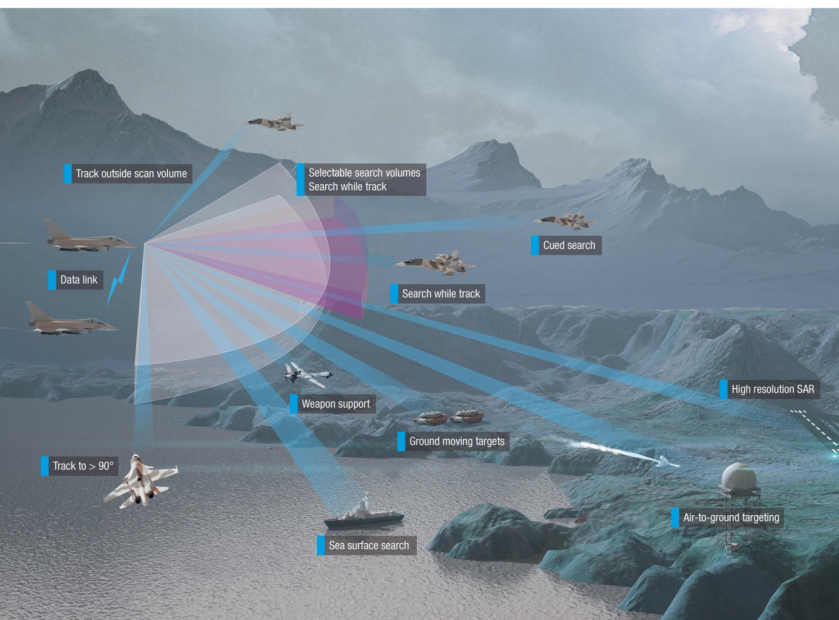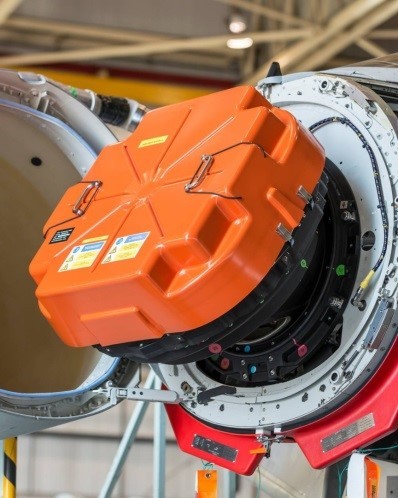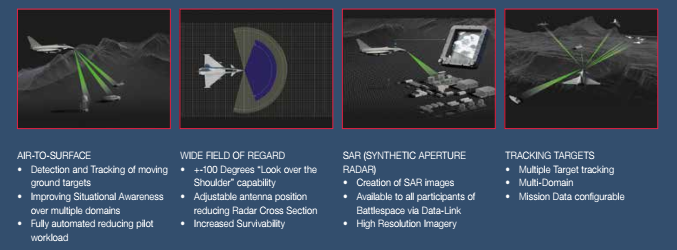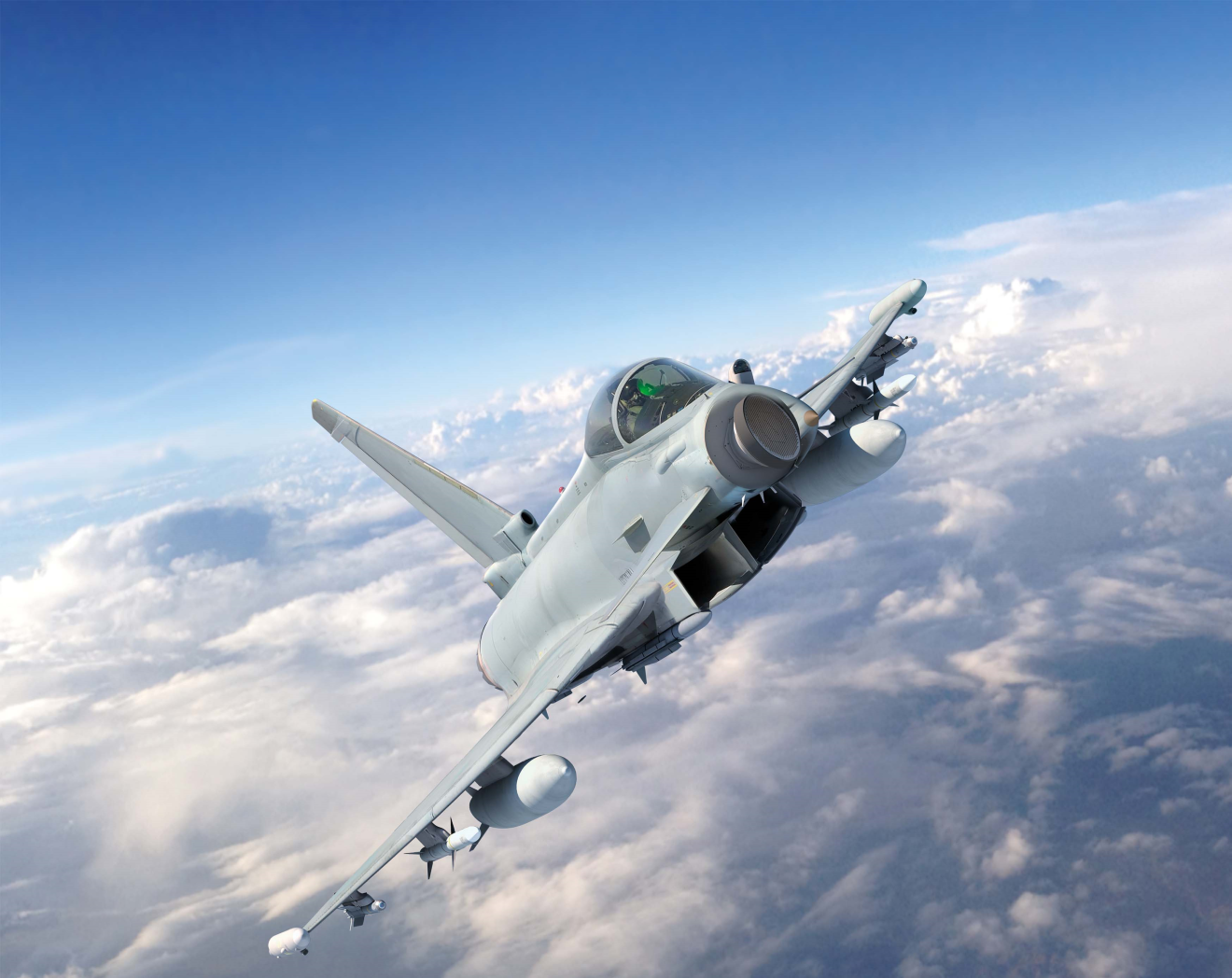Soon after this announcement was made, the UK awarded a contract to develop the Mk2 variant of the radar for future embodiment into the Royal Air Force's (RAF) Eurofighter Typhoons.
Eurofighter World spoke to David Hulme who is responsible for the acquisition and delivery of the portfolio of E-Scan contracts, including the core development programme to integrate the E-Scan radar system into the aircraft. David’s role also encompasses bid and campaign activity for future programmes, which includes the Eurofighter Common Radar System (ECRS) programme. The ECRS comprises the three variants ofE-Scan radar: the Mk 0, Mk1 and Mk2, and also the potential upgrade of the MSCAN radar, which is currently in service.
Where are we now?
We've recently been successful in securing commitment to the German-Spanish retro-embodiment programme into 126 aircraft. This is in addition to our established production customer requirements in support of new-build aircraft deliveries into Kuwait and Qatar.
Moreover, the UK has recently committed a significant development programme to enhance the Electronic Warfare capabilities of E-Scan, through the Mk2 programme.
It means we now have five air forces planning to operate with E-Scan enabled Eurofighter Typhoon Aircraft, and four confirmed production programmes. In addition, there are significant ongoing discussions with current and future customers for both retro and new aircraft requirements, inclusive of E-Scan capabilities.
Additionally to the core development programme, which is well-advanced in delivering the ECRS Mk0 variant, there are also major development programmes underway to develop and integrate the future variants of ECRS; Mk1 and Mk2.
When you consider the future of the Eurofighter programme over the next decade, the continued evolution and enhancement of the aircraft primary sensor will form a major element of all our development programmes.
Phased outputs with respect to radar variants and associated capability enhancements will continue to deliver in support of our increasing production commitments. This starts with our Kuwait and Qatar customers, with Germany and Spain following soon after.

What’s the significance of E-Scan?
The integration of the baseline E-Scan capability or CAPTOR-E (Advanced Wide Field of Regard Active Electronic Scanned Array) is a fundamental enabler for capability growth across the Eurofighter platform. Yes, it is a significant capability uplift in its own right, but E-Scan is also the catalyst for the development of many of the other systems on the Eurofighter Typhoon platform. The integration of E-Scan radar has already triggered a range of enhancements across a number of other aircraft systems, particularly the avionics, power and cooling systems.
To fully exploit certain E-Scan capabilities, there are also a number of elements of the Long Term Evolution (LTE) programme that will be enabled and supported as a result of E-Scan integration. These include the potential for cockpit upgrades, enhanced mission computers and high speed networks.
For example, the E-Scan radar is capable of absorbing a lot more data from the environment. Of course, the aircraft therefore needs to be able to deal with that data in terms of what it processes, what it stores, what it offboards through data linking, et cetera.
How good is the Eurofighter E-Scan?
It’s world beating. The Eurofighter E-Scan is incredibly capable; it can carry out a wide range of functions concurrently and with higher degrees of autonomy. With a full suite of advanced Air-to-Air and Air-to-Surface modes, it delivers to Eurofighter Typhoon more capability and supports a wider range of operations, improving the utility and effectiveness of the platform.
A key point here is mission data, which, in accordance with many aspects of Eurofighter Typhoon, will make the E-Scan radar increasingly configurable. In operational terms, it means the aircraft can be rapidly modified based on the prevailing mission and environment.
The aim is to maximize flexibility and end-user configurability. That’s why there are a number of different radar variants, each with their own particular features and strengths. These can be further configured and refined through end-user mission-data.
Why the different variations?
Different customers have differing operational requirements and that's why we have different variants of the radar.
Whilst there are multiple variants of the ECRS radar, there is one common integration programme and weapon system solution. The common programme approach allows Eurofighter to cater for different customer requirements, without costs spiralling due to divergent requirements and stand-alone development programmes. This approach enables the flexibility we need to respond to multiple Customer requirements in terms of the specific capabilities they require, and the time in which they want them.

The weapon-system itself — the avionics, the cockpit, the power, the cooling, the structure, the support solution — is configured to support all of these different variants. It’s a plug and play concept that Eurofighter is developing. One common interface and infrastructure within which multiple radar variants can be utilised.
Delivery of complex requirements and programmes through partnership and collaboration across the best of the European aerospace sector is fundamentally what Eurofighter Jagdflugzeug GmbH is here to do. We are supporting and enabling national requirements to be delivered, without compromising the benefits of international collaboration.
How do you define the different variants?
We can’t go into too much detail, suffice to say each E-Scan variant is tailored for specific operational requirements.
ECRS Mk0 is the core product, the hardware standard and capabilities have been delivered through the core development contract.
ECRS Mk1 and ECRS Mk2 are enhanced products currently under development. These supplement the Mk0 product, with further hardware and software upgrades, enabling even more capability enhancements to be delivered.
What’s the future for the E-Scan programme?
The E-Scan radar, and the technology it brings, delivers a significant capability improvement, but it can bring more. There's provision and growth potential in the ECRS solutions to do more, to be further exploited, and to add further operational capability to what the Eurofighter Typhoon can deliver. The capabilities now under development, will help ensure the operational effectiveness of Eurofighter Typhoon for decades to come.
What about the existing radar?
The MSCAN radar, which is on the fleet today, will also be sustained and there will be a series of capability upgrades in the forward plan to ensure operational capabilities are maintained. The key point is that MSCAN will remain as an operational variant within the common weapon system solution developed through the ECRS programme.
What’s happening with the core development programme?
The core development programme is delivering the integration of E-Scan capability into the Eurofighter Typhoon. The ECRS and future development programmes build on the product of this contract. The hardware standard resulting from the core development programme is designated as ECRS Mk0 and development is complete. Functional development is advanced in support of its initial Entry-Into-Service next year.

How significant is the new contract with Germany, Spain and the UK?
It’s a very positive step forward. Not only is it a major investment into the programme, but it also supports the capability growth plan for Eurofighter Typhoon. In particular, it reinforces the future role of Eurofighter Typhoon within the Core Nations air forces.
The contract is great news for everyone associated with the Eurofighter programme because it reflects continued confidence in the product and in the international collaboration and construct that makes it possible
All Partner Nations and their Industries benefit and receive a share of the work, and the whole Eurofighter endeavour takes another major step forward.
It’s also a programme of significant scale. The upgrade programme will run from around 2022 to 2032 and will provide a backbone of ongoing work into the Eurofighter Partner Companies and Radar Suppliers. This is hugely important for the ongoing stability and continuity of our Industrial base
Securing core nation customers for E-Scan is significant in another sense. It sends the message out from the German and Spanish customers that they’re now confident in the E-Scan capability and are committed to the upgrade of their Eurofighter Typhoon fleets. Eurofighter Jagdflugzeug GmbH is similarly focused on bringing a corresponding upgrade programme with the UK and Italy into reality, and their significant ongoing investment into the ECRS development programme underpins this intent
What is the current state of the E-Scan delivery programme?
We are focused on ensuring a successful Entry-into-Service programme with the Kuwait customer next year, and the development and production programmes remain on track.
The production lines are fully mobilised, with deliveries of radar systems into aircraft final assembly well underway. We have a number of functional developments underway through our ongoing Flight Test programme, whilst the hardware is mature and stable. We are on track to hit all the key milestones for 2020.
E-Scan: The Operational Relevance
By Raffael Klaschka, Eurofighter Strategic Marketing
The E-Scan Radar opens the door for Eurofighter Typhoon into the Future Operating Environment. That’s because the radar is the main sensor of the aircraft, and improvements and insertions of new capabilities act as multiplier for the whole Mission Effectiveness of the weapon system. A greater field of regard, more radar power and automated multi-mode operation are only some of the features. More detection range and smart incorporation with all sensors will help to reduce the pilot workload whilst enhancing Situational Awareness
Multiple beams allow for extremely precise target tracking, giving the pilot maximum authority over engagement ranges and tactical decisions. Thanks to the Wide Field of Regard, there’s greater potential to reduce geometrical closure to an enemy while maintaining the full picture. In short, while there is much more potential to explore with the Captor-E E-Scan, it is clearly a game changer. It offers the Eurofighter pilot a significant tactical advantage and, when allied with the platform’s inherent power and agility, means Typhoon will be a potent performer for the future.
